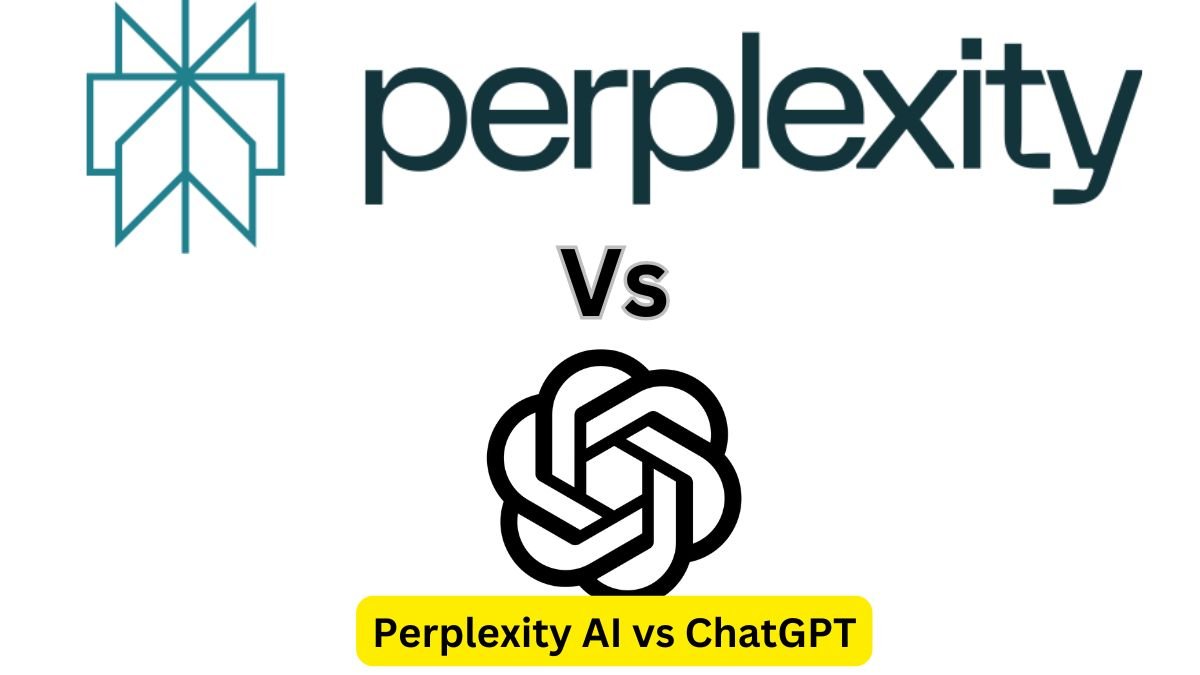Perplexity AI vs ChatGPT:- In the rapidly evolving world of Artificial Intelligence (AI), two popular models—Perplexity AI and ChatGPT—have captured the attention of developers, researchers, and businesses alike. Both models have distinct strengths and weaknesses, offering different functionalities based on user needs. In this article, we will thoroughly compare Perplexity AI and ChatGPT to help you understand their differences and which is the better tool for your use case.
What is Perplexity AI?

Perplexity AI is a cutting-edge AI language model designed primarily for tasks that involve predicting the probability of a given text sequence. It helps gauge how well a language model understands and generates text. Perplexity is a statistical measure used to evaluate language models by quantifying how uncertain a model is about predicting the next word in a sentence. The lower the perplexity score, the better the language model is at making accurate predictions.
Perplexity AI excels in scenarios where language generation needs to be precise and contextually aware. This makes it particularly useful in natural language processing (NLP) applications that require high levels of accuracy, such as machine translation, text summarization, and question-answering systems.
Strengths of Perplexity AI
- Accuracy in Predictive Text Generation: Perplexity AI is known for its ability to predict the next word in a sequence with high accuracy, making it an excellent choice for applications that rely heavily on context.
- Enhanced Contextual Awareness: The model’s ability to analyze previous text makes it particularly strong in complex sentence structures and long-form content.
- Efficient in NLP Applications: Industries like customer support, content creation, and e-commerce benefit from Perplexity AI’s advanced understanding of language models.
- Lower Perplexity Score: A lower perplexity score indicates that the AI model can make better word predictions, reducing errors and improving the overall user experience.
Weaknesses of Perplexity AI
- Limited Conversational Abilities: Unlike ChatGPT, Perplexity AI is not specifically designed for engaging, human-like conversation. Its primary focus is on text prediction rather than natural dialogue.
- Narrower Use Cases: While it excels in text prediction, its applications are more limited compared to more versatile models like ChatGPT, which can be used for a broader range of tasks.
What is ChatGPT?

ChatGPT, developed by OpenAI, is a widely-known language model based on Generative Pre-trained Transformer (GPT) architecture. It is designed to generate human-like text and engage in interactive, contextually relevant conversations. ChatGPT can answer questions, engage in dialogue, and even write long-form content on a wide array of topics.
One of the major strengths of ChatGPT is its ability to adapt to different conversational styles, making it a versatile tool for chatbots, content generation, technical support, and more. ChatGPT has been trained on massive amounts of text data, allowing it to understand diverse contexts and provide coherent, contextually rich responses.
Strengths of ChatGPT
- Human-Like Conversations: ChatGPT is exceptional in generating natural-sounding conversations, making it a popular choice for customer service chatbots and virtual assistants.
- Broad Applications: ChatGPT can be used for tasks ranging from code generation to creative writing, making it a versatile AI model for a variety of industries.
- User-Friendly: ChatGPT is intuitive and user-friendly, making it accessible to non-experts who want to leverage AI for content creation, customer interaction, or task automation.
- Creative Content Generation: ChatGPT’s ability to generate long-form content and creative writing gives it a competitive edge in industries like marketing, advertising, and media.
Weaknesses of ChatGPT
- Higher Perplexity Score: Compared to Perplexity AI, ChatGPT tends to have a higher perplexity score, meaning it may not be as precise in predicting the next word in some structured, formal contexts.
- Prone to Hallucinations: ChatGPT may generate content that appears correct but is factually inaccurate. This is a common issue with large language models trained on vast datasets without human oversight.
- Limited Knowledge Cut-off: ChatGPT has a knowledge cut-off at a certain point in time. While it is continuously updated, there may be gaps in its understanding of the most recent events or information.
Perplexity AI vs ChatGPT: Key Differences
Use Cases
- Perplexity AI is ideal for tasks that require highly accurate language generation, particularly in fields like legal documentation, scientific writing, and translation services. Its superior predictive capabilities make it a go-to tool for industries that prioritize precision over conversational flexibility.
- ChatGPT, on the other hand, is highly adaptable and excels in dynamic conversational scenarios. It is well-suited for industries like customer service, education, and entertainment, where human-like dialogue and broad knowledge are paramount.
Accuracy vs. Flexibility
- Perplexity AI offers greater accuracy in text prediction, making it suitable for mission-critical applications where every word counts. Its strength lies in its ability to maintain contextual consistency over long-form texts.
- ChatGPT provides greater flexibility, handling diverse conversational tasks with ease. While it may not be as precise in predicting every word, its strength lies in generating cohesive and contextually appropriate conversations.
Customization
- Perplexity AI offers limited options for customization, as its focus remains on text prediction and accuracy. It excels in fields that require technical language and formal text generation.
- ChatGPT, on the other hand, is highly customizable. Developers can fine-tune the model for specific tasks or industries, making it a more versatile tool for organizations that require personalized AI solutions.
Which One Should You Choose?
Choosing between Perplexity AI and ChatGPT ultimately depends on your use case:
- If you need highly accurate text predictions for structured tasks like formal writing, translation, or data-driven applications, Perplexity AI may be the better option.
- If you are looking for a more versatile, conversational AI model that can handle a wide variety of tasks, including customer interaction, content creation, and dynamic dialogue, ChatGPT is the clear choice.
Both models bring unique strengths to the table. The decision comes down to whether you prioritize precision and text accuracy or conversational flexibility and adaptability.
In this blog, we have provided detailed information on Perplexity AI vs ChatGPT. We appreciate you taking the time to read this post about Perplexity AI vs ChatGPT in our blog! If you find this information useful, please share this blog with your friends and family so that they can also know about Perplexity AI vs ChatGPT. Visit our website homepage weblog365.in to read more interesting and informative blogs and stay updated.

My name is Yogesh Pandey, and I hail from Lucknow, India. I work in digital marketing. I have been blogging since 2023. I write about Technology, Entertainment, Automobile, and Lifestyle providing insights to help others find quality products. I am excited to have the opportunity to collaborate with weblog365.in now. You can reach out to me via email at weblog365.in@gmail.com. Let’s connect! 🙏
